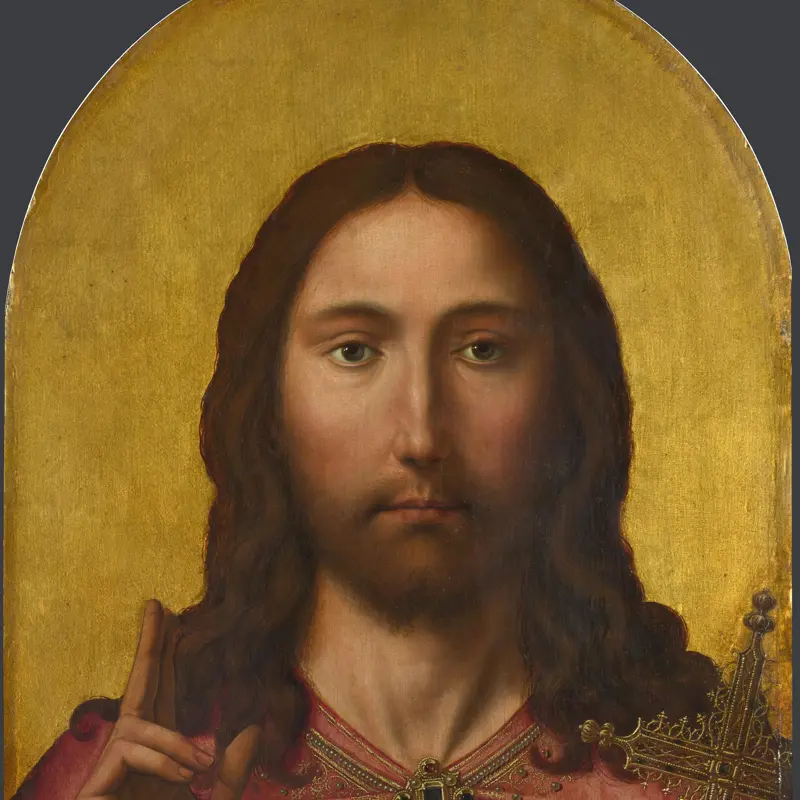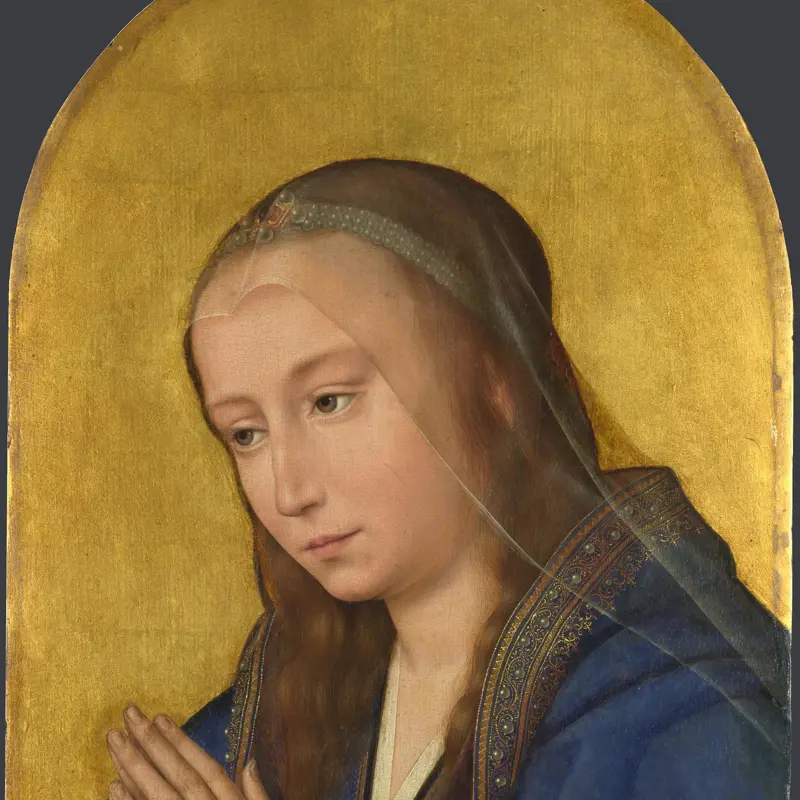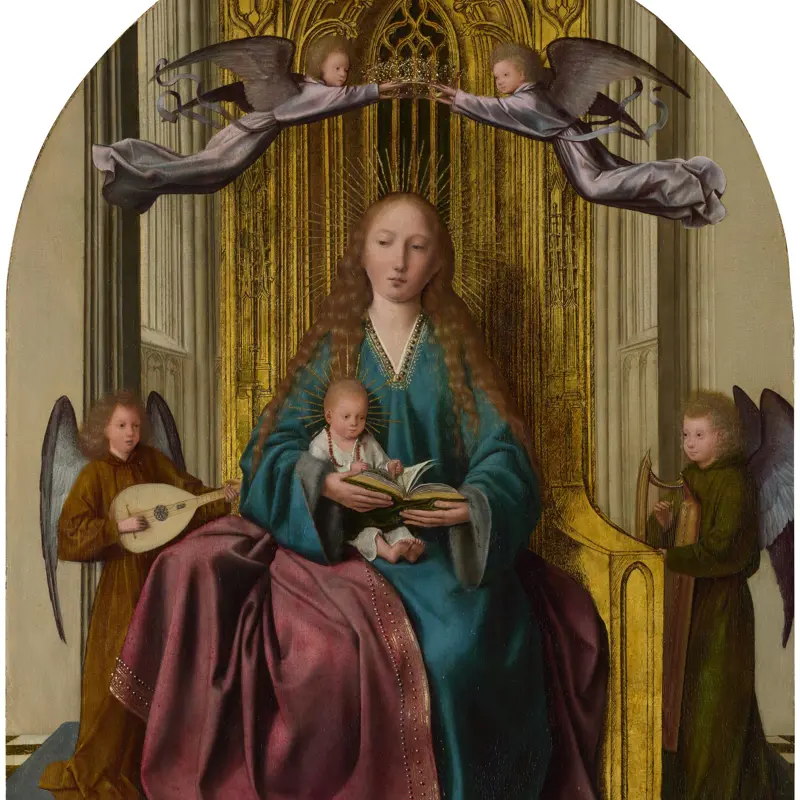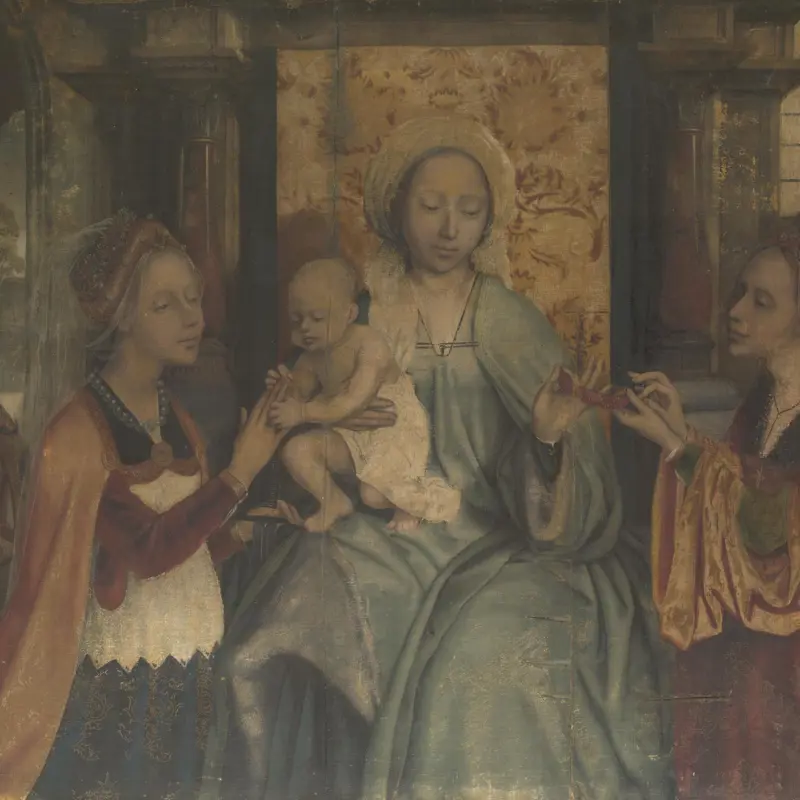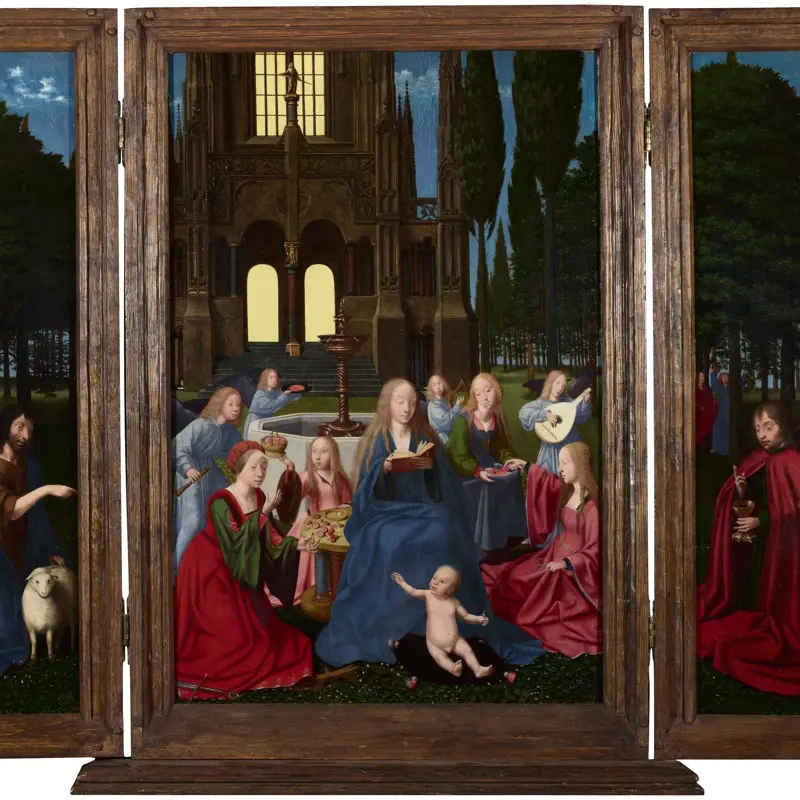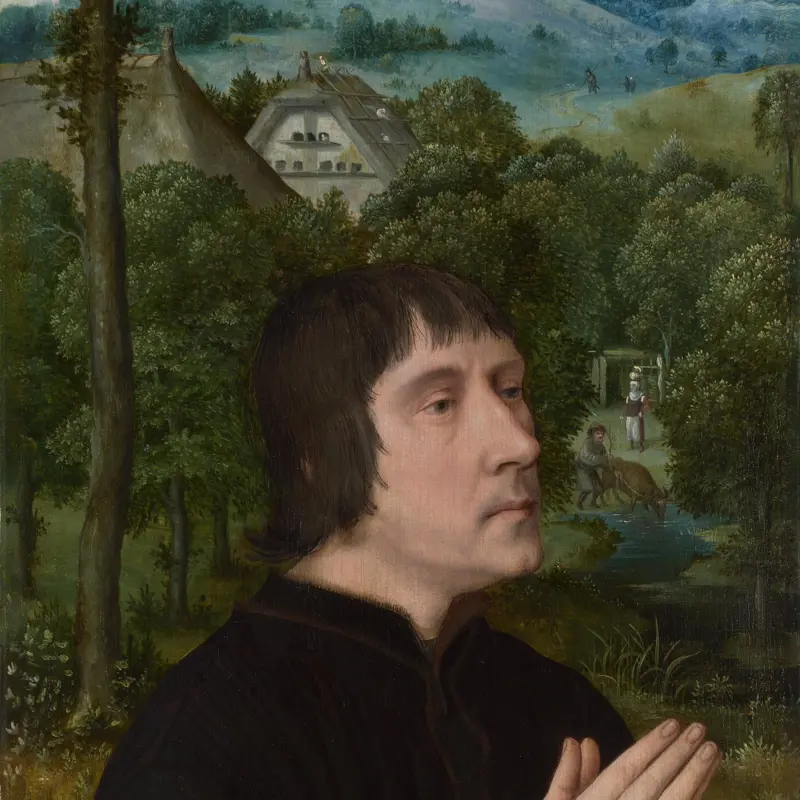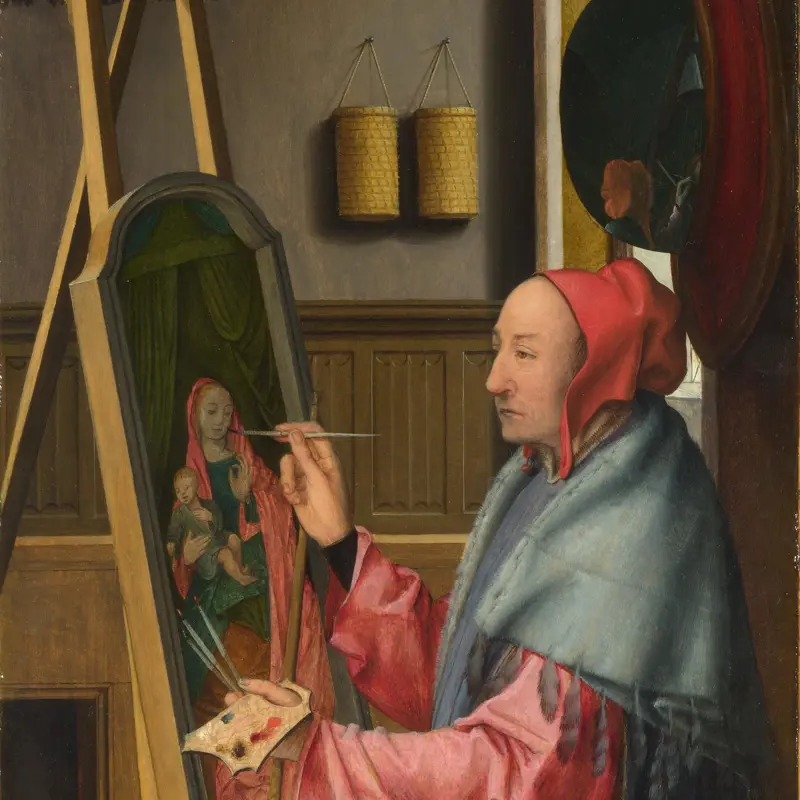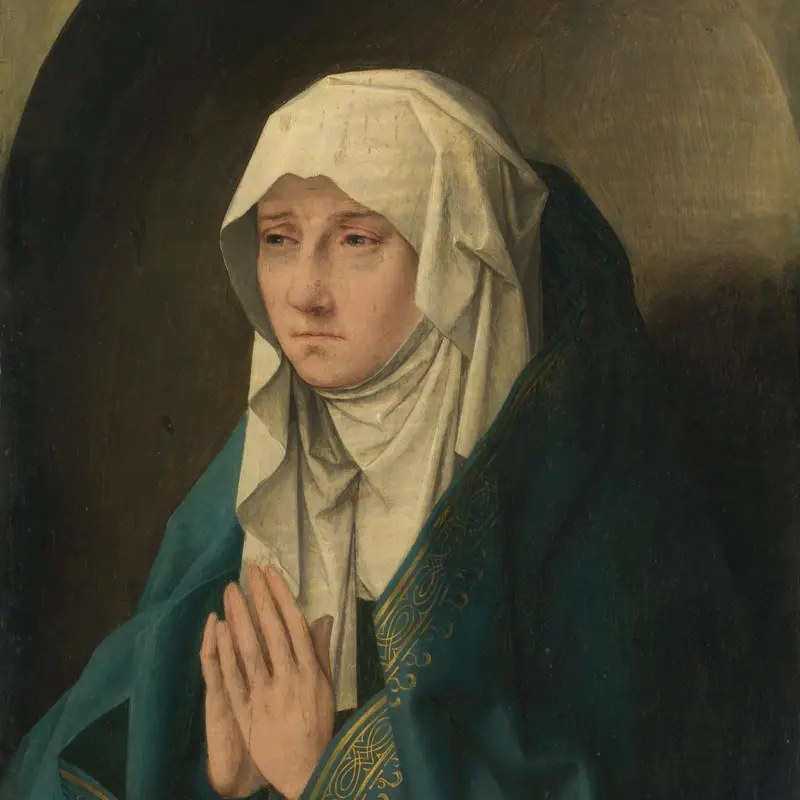Workshop of Quinten Massys, 'The Virgin', about 1510-25
About the work
Overview
The Virgin Mary gazes to her right, her hands folded in prayer. She is richly dressed: her mantle is edged with delicate gold embroidery dotted with pearls, and her blue underdress is lined with brown fur. On her head is a circlet of three strands of pearls held with a jewelled catch, and a transparent veil woven of very fine threads.
This panel goes with another, showing showing Christ as the Salvator Mundi (‘Saviour of the World’), which is also in the National Gallery’s collection.
Key facts
Details
- Full title
- The Virgin
- Artist
- Workshop of Quinten Massys
- Artist dates
- 1465/6 - 1530
- Part of the group
- Diptych: Christ and the Virgin
- Date made
- About 1510-25
- Medium and support
- Oil on wood (Baltic/Polish oak, identified)
- Dimensions
- 60.3 × 34.7 cm
- Acquisition credit
- Bought, 1857
- Inventory number
- NG295.2
- Location
- Not on display
- Collection
- Main Collection
Provenance
Additional information
Text extracted from the ‘Provenance’ section of the catalogue entry in Lorne Campbell, ‘National Gallery Catalogues: The Sixteenth Century Netherlandish Paintings: With French Paintings before 1600’, London 2014; for further information, see the full catalogue entry.
Exhibition history
-
2013Willem II & Anna Pavlovna - Royal Splendour at the Dutch CourtThe State Hermitage Museum24 September 2013 - 19 January 2014Dordrechts Museum4 March 2014 - 16 June 2014Villa Vauban - Musée d'Art de la Ville de Luxembourg12 July 2014 - 12 October 2014
Bibliography
-
1945Davies, Martin, National Gallery Catalogues: Early Netherlandish School, London 1945
-
1955Davies, Martin, National Gallery Catalogues: Early Netherlandish School, 2nd edn (revised), London 1955
-
1987Davies, Martin, National Gallery Catalogues: The Early Netherlandish School, 3rd edn, London 1987
-
2001
C. Baker and T. Henry, The National Gallery: Complete Illustrated Catalogue, London 2001
-
2014
L. Campbell, National Gallery Catalogues: The Sixteenth Century Netherlandish Paintings: With French Paintings before 1600, 2 vols, London 2014
About this record
If you know more about this work or have spotted an error, please contact us. Please note that exhibition histories are listed from 2009 onwards. Bibliographies may not be complete; more comprehensive information is available in the National Gallery Library.
Images
About the group: Diptych: Christ and the Virgin
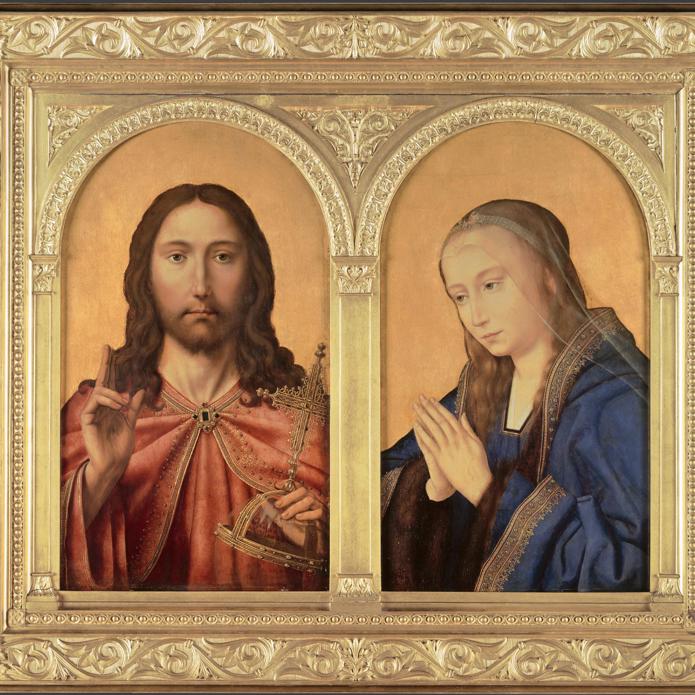
Overview
This composition of Christ as the Salvator Mundi (‘Saviour of the World’) adored by his mother, the Virgin Mary, was very popular in the early sixteenth century. These are workshop copies of originals painted by Quinten Massys towards the beginning of his career. His workshop then continued to produce further versions over a long period.
These panels were painted by Massys‘ two main associates, one working on each; some less important areas were delegated to assistants, who perhaps worked on both. Although the panels have always been regarded as a diptych (a painting made of two parts) they were not actually made to go together. The Virgin probably came from the stock in Massys’ workshop and was cut down to be paired with the painting of Christ.

